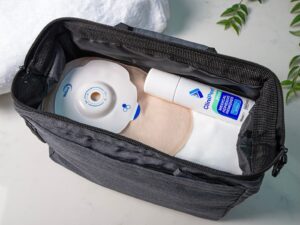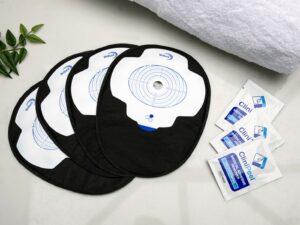Recovering from major abdominal surgery, such as stoma surgery or hernia repair, comes with many considerations. One important aspect of recovery is learning how to get in and out of bed safely. Correct techniques can help reduce discomfort, minimise strain on your abdomen, and lower the risk of injury.
Preparing your bed for safety
Before getting in or out of bed, take a moment to ensure your environment is set up for safety.
- Adjust your bed height. If your bed is adjustable, change the height so your feet touch the floor when sitting on the edge. This improves stability and makes it easier to sit down and stand up.
- Flatten the backrest. If your bed has a tilting backrest, ensure it is flat to provide better support.
- Clear the area. Remove any pillows or cushions that could interfere with your movements, and check the floor is clear from hazards to prevent trips and falls.
Safe Movements for getting in and out of bed
When getting into bed:
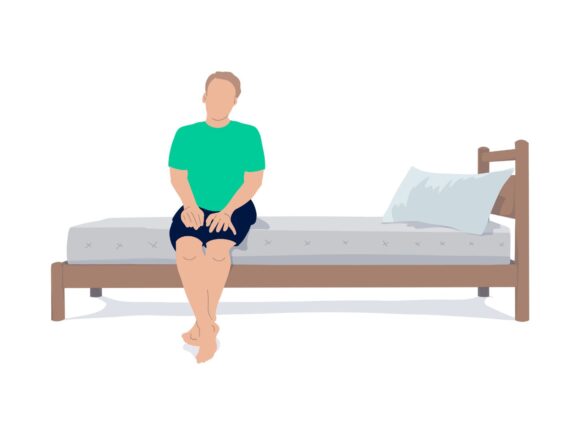
Sit at the edge of the bed with your feet flat on the floor.
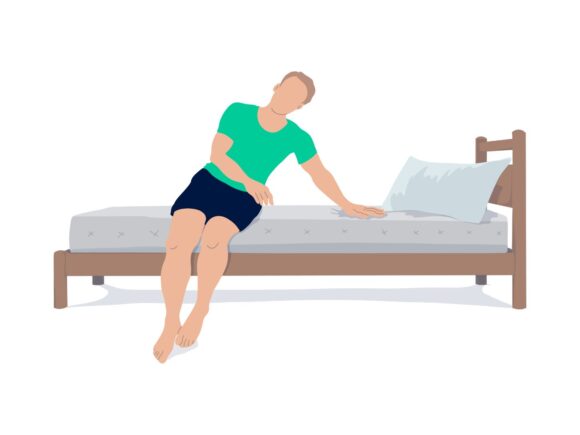
Place one arm on the bed for support, then the other.
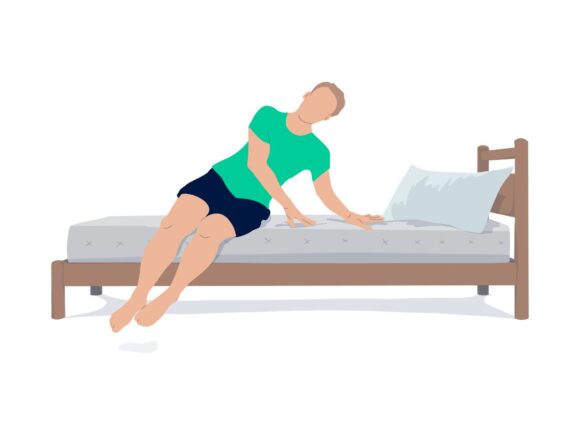
Begin to slowly lower yourself onto your side using your arms for support.
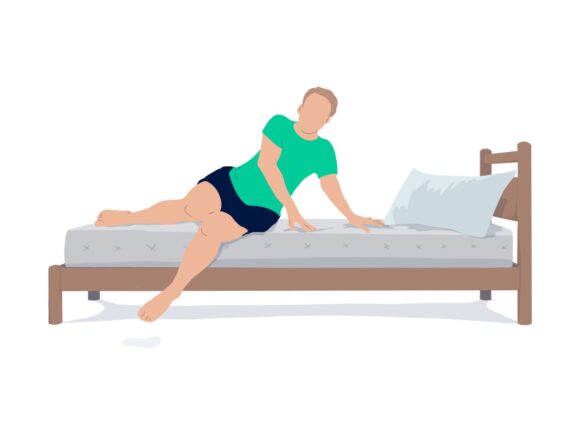
Lift one leg onto the bed.
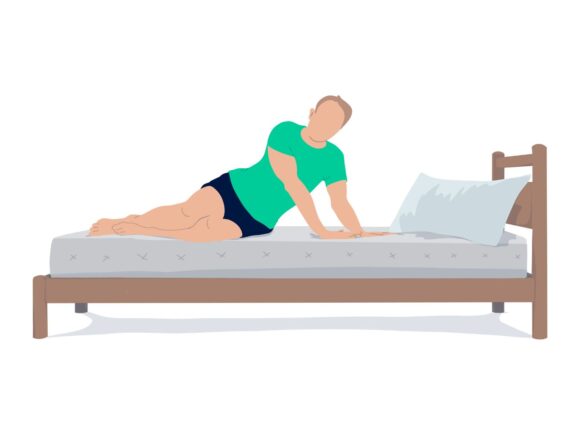
Then the other.
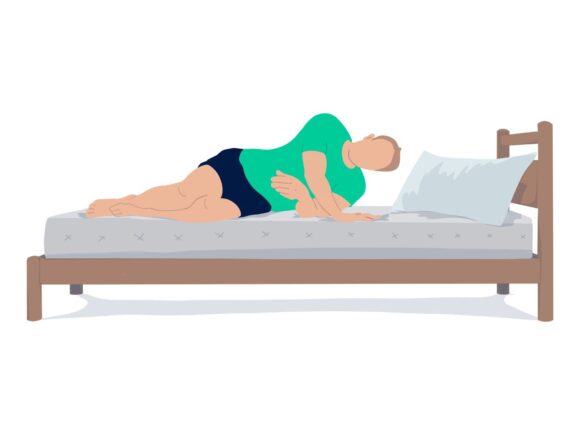
Then fully lower yourself onto the bed.
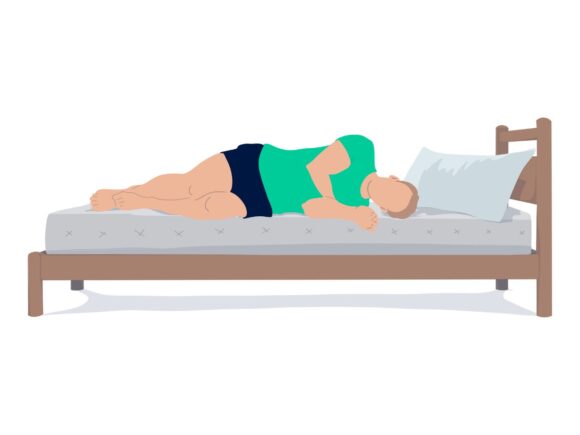
Fully support your head on your pillow or cushion.
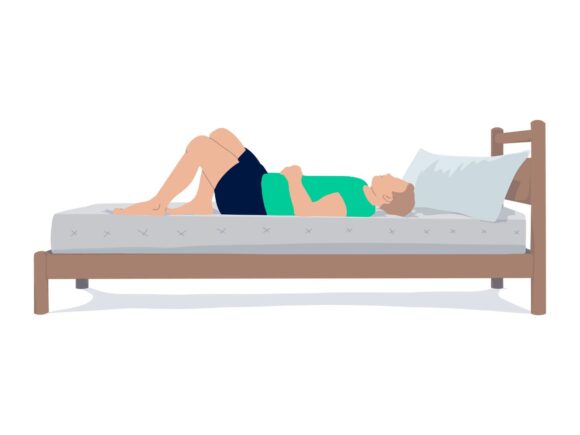
Then roll gently onto your back.
When getting out of bed:
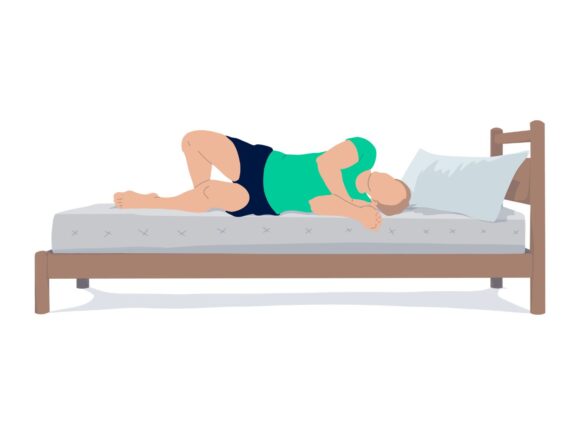
Roll onto your side with head supported on the pillow or cushion.
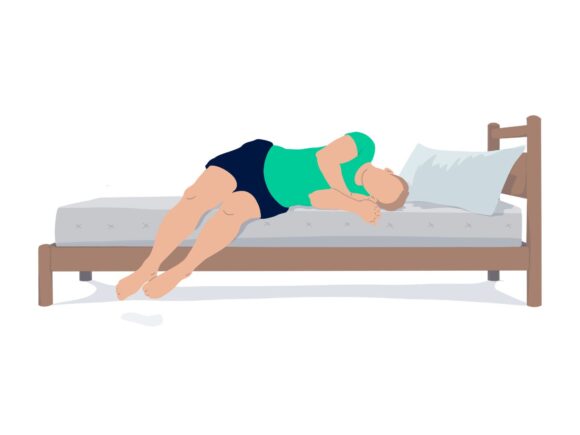
Slide your feet outwards until they hang over the edge of the bed, keeping your feet together.
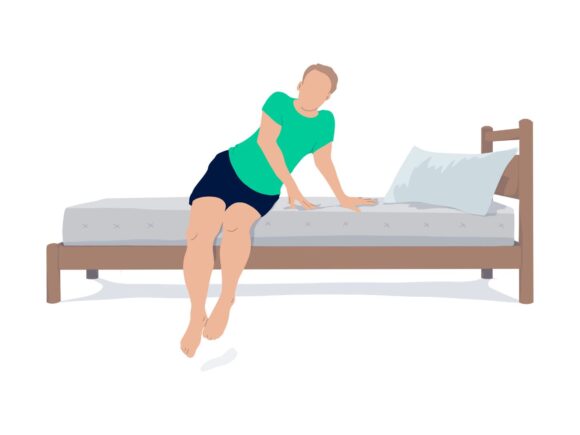
Use your arms to push up from the bed. At the same time, let your legs drop down from the bed, keeping your legs together. Pause before standing, hinge at hips, and push up using arm and leg strength.
Key safety tips to remember
- Avoid lifting your head. The head is the heaviest part of the body and lifting it up can increase pressure in the abdomen.
- Use your arms for support. This helps to distribute weight evenly, helping to maintain balance, and reduces pressure on your abdomen.
- Listen to your body. If you feel tired or dizzy, take a break before continuing.
Watch our quick, easy-to-follow video for step-by-step instructions on safely getting in and out of bed with confidence.
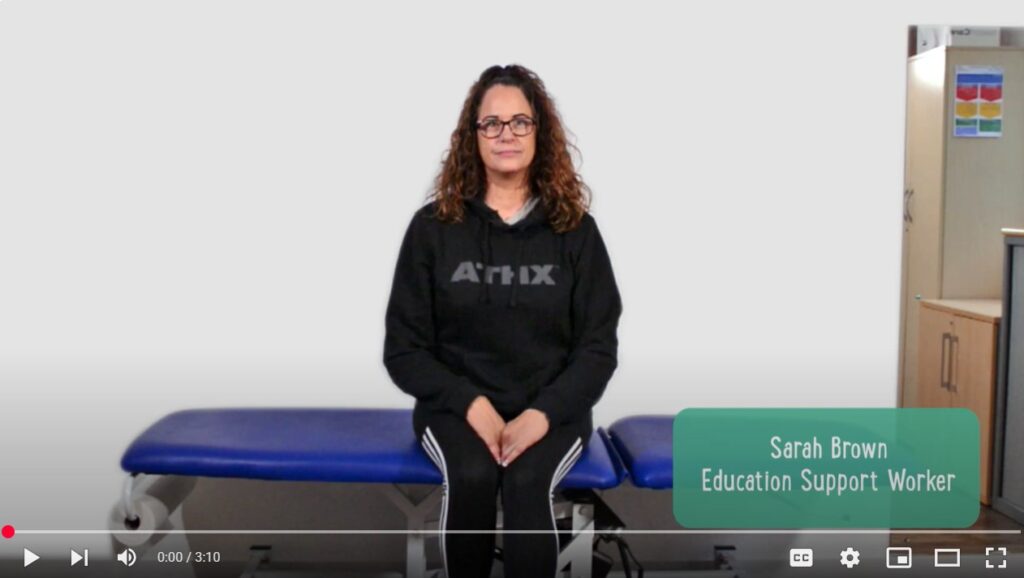
Read the transcript +–
Sarah: Did you know that there’s a safe way to get in and out of bed after stoma surgery? In this video we’re going to show you how.
Sarah: If you’re in hospital and you have an adjustable hospital style bed, adjust this to a height which will place your feet flat on the floor when sitting on the edge. The bed should be flat which provides stability. If you’re at home, make sure the area surrounding the bed is clear to reduce the risk of trips and falls.
Sarah: Lower yourself into a sitting position at the edge of the bed getting as much contact with the bed as possible. Slide one arm out onto the bed towards the head and then bring the other arm towards the bed across your body. Slowly begin to lower yourself towards the bed on your side maintaining the support with your arms. As you’re lowering yourself towards the bed bring one leg up then the other. Don’t bring both legs up at the same time.
Sarah: Slowly lower yourself onto the bed until your head is fully supported on the bed or pillow and you’re lying on your side. Making sure the head remains supported, roll over onto your back and find a comfortable position. Keep your shoulders and hips in line as you roll over.
Sarah: To safely get out of bed remember that the bed should be flat and start from a lying position. Roll over onto your side close to the edge of the bed keeping your head supported.
Sarah: Keeping your legs together slide your feet off of the edge of the bed and use your top arm to push your body up to a sitting position as you bring your legs down to the floor at the same time.
Sarah: Pause for a few seconds until you stand up from the bed keeping your core connected gently hinging at the hips and using your arm and leg muscles to push yourself into a standing position. Wait a moment before walking to make sure you’re not dizzy.
Sarah: The breathing and movements program is designed to support your recovery after stoma surgery helping to build your confidence and promote safe movement. The program covers breathing technique, core connection and movements which will help you develop your stability, strength and muscle tone. The breathing and movements program is suitable for people of all ages and abilities and can also be used pre-stoma surgery. Learn more about the breathing and movements program on the CliniMed website or by clicking the link in the description.
By following these simple steps, you can make getting in and out of bed safer and more comfortable during your recovery. Make sure you listen to your body and if you feel any discomfort, consult your Stoma Care Nurse or healthcare professional for additional support and guidance.
Next steps to recovery
The Breathing and Movements programme is here to support your recovery after stoma surgery. This programme is for all ages and abilities, whether you’re preparing for surgery, recovering from it, or have had a stoma for a long time.
Breathing and Movements is designed to reduce the risk of developing a parastomal hernia and focuses on the essential areas of breathing technique, core & pelvic health, and strength & stability. Split into easy-to-follow phases, the programme demonstrates a series of movements designed to support safe movement and help you feel confident in returning to regular activities.
Learn more about Breathing and Movements and download your free guide.
